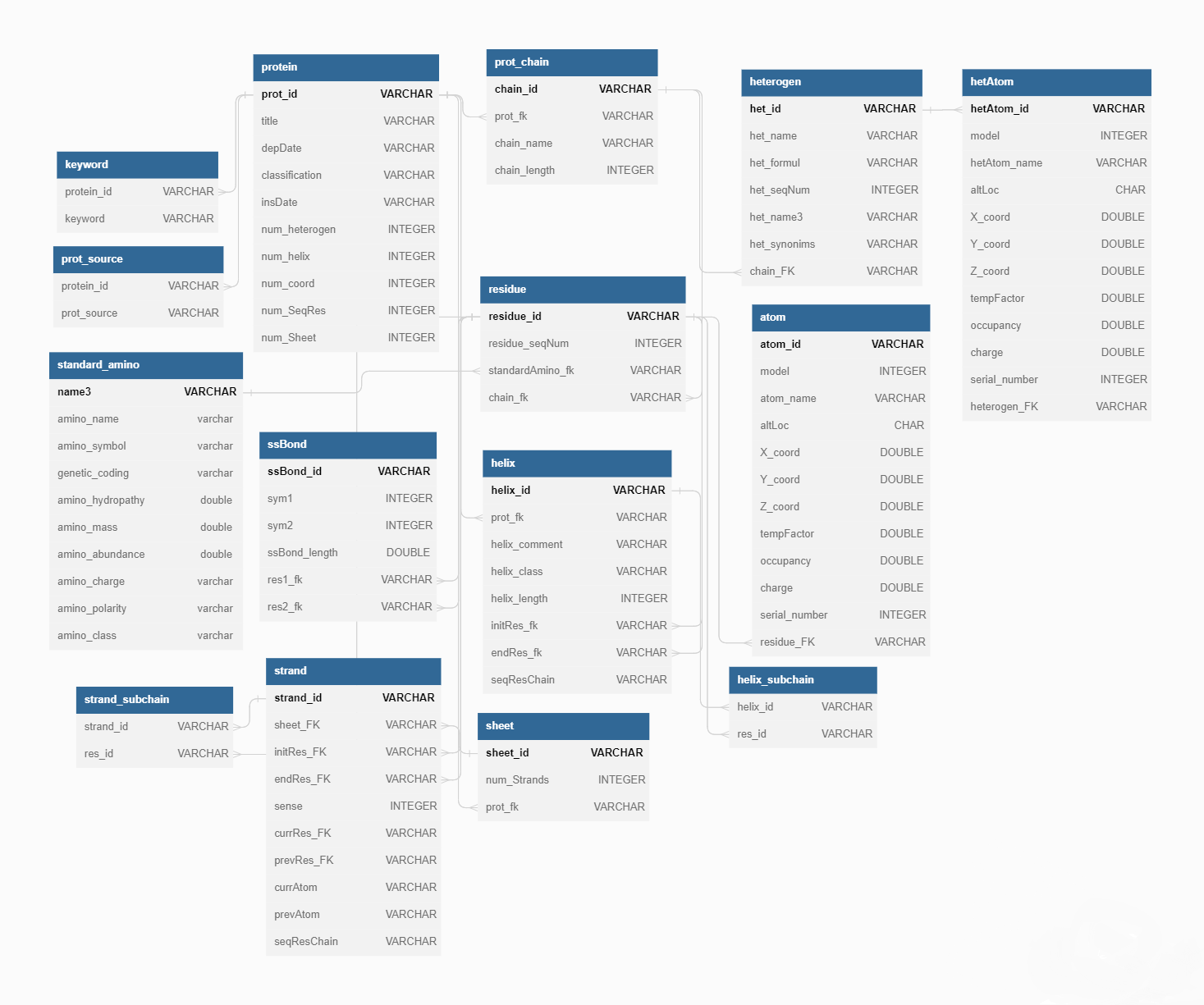Tables desciption
SQL4PDB is an application that allows to execute SQL query over a relational database with PostgreSQL, within the database is stored large quantities of PDB entries. However, some entries are discarded because they are not relevant or they are not a protein. Below, a general decription of every table in the database is given. These tables represent a record inside a PDB file. For example, SEQRES record is represented with chain and residue tables. Additionally, the amount of tuples is presented.
| Table name | Description | Nº tuples |
|---|---|---|
| Atom | Represents the atoms inside an amino acid with their information and coordinates | 890,552,918 |
| Helix | Contains the information of a helix | 4,110,517 |
| Helix_subchain | Contains the amino acid sub-chains of a helix | 42,582,125 |
| Hetatom | Contains the information of the atoms in a ligand | 15,108,800 |
| Heterogen | Represents the ligands contained by a protein with theri name or chemical formula | 4,734,798 |
| Keyword | Protein keywords | 629,679 |
| Prot_chain | Represents a chain inside a protein, with the name, length and a amino acid chain | 717,529 |
| Prot_source | Source of a protein | 192,807 |
| Residue | Represents an amino acid of a protein chain, with the position in the chain and the ID | 119,384,120 |
| Sheet | Contains infomation of a sheet | 949,298 |
| SSBond | Represents the disulfure bonds of a protein | 223,633 |
| Standard_amino | Contains the general information of an amino acid | 31 |
| Strand | Contains information about the strands of a sheet | 3,999,837 |
| Protein | Contains the general information of a protein, like ID, name, clasification or number of components | 135,199 |
| Strand_subchain | Contains the amino acid sub-chain of a strand | 18,176,390 |
Also, there are some discarded entries because they have a different PDB format or they are not to important to analize. The discarded entries are the followings:
- DNA/RNA entries.
- Entries with RNA or ELECTRON CRISTALOGRAPHY experiment.
- Entries with aminoacids located in an alphanumeric position within a chain.
- Entries that has a different aminoacid in a chain (Not standard).
- Entries without aminoacid chains or without SEQRES record.
Relational schema
The database relational schema is presented below. This schema allows to visualize every table inside the database with their attributes. The bolded attributes are the primary key or the identification inside the database and the connections represents an attribute making reference to a primary key of another table, so it's possible to identify every entry data in the database.
